
loading

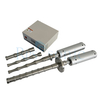

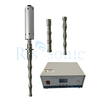

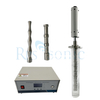

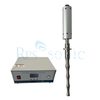

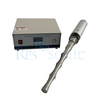

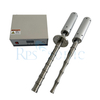
| Availability: | |
|---|---|
| Quantity: | |
| Place of Origin | China |
|---|---|
| Brand Name | RPS-SONIC |
| Certification | CE |
| Model Number | RPS-C20 |
| Minimum Order Quantity | 1set |
| Price | USD2500/SET |
| Packaging Details | Carton box |
| Delivery Time | 5-8 working days |
| Payment Terms | T/T |
Parameter:
| Frequency | 20Khz |
| Probe Material | Titanium |
| Power supply | Ultrasonic digital generator |
| Power | 2500W |
| Application | Metal melt, Metal liquid processing, Aluminum liquid processing |
| Amplititude | 30um |
Ultrasonic aluminum melt treatment is a process that uses ultrasonic technology to optimize the properties of aluminum and its alloy melts. Through the acoustic cavitation and acoustic streaming caused by ultrasound, the melt quality can be improved, the grain size can be refined, the pores can be reduced, and the mechanical properties and yield rate of aluminum products can be improved.
Working Principle
1. Sound wave transmission: Ultrasonic vibrator transmits high-frequency sound waves (usually in the range of 20-40kHz) to aluminum melt.
2. Cavitation effect: Ultrasonic waves generate tiny bubbles in the melt, which collapse rapidly in the pressure fluctuation. The collapse process produces local high temperature, high pressure, strong shear force and micro jet.
3. Physical effect: Promote the escape of gas (such as hydrogen) inside the melt, thereby reducing pores.
Destroy the aggregation of oxides and inclusions and improve the purity of the melt.
4. Chemical effect:
The cavitation effect enhances the uniformity of the dispersion of alloy elements in the melt.
It helps to refine the grains and improve the microstructure.
Main applications
1. Gas removal (degassing):
Hydrogen in aluminum melt is the main cause of pore formation. Ultrasonic degassing can quickly and efficiently remove dissolved hydrogen in the melt.
2. Inclusion removal:
Ultrasonic waves can disperse non-metallic inclusions from the melt and make them float, thereby improving the purity of aluminum.
3. Grain refinement:
During the casting process, ultrasonic waves can inhibit the growth of columnar crystals and form a uniform equiaxed crystal structure, thereby improving the strength and toughness of aluminum.
4. Alloy homogenization:
Ultrasonic waves can promote the mixing and diffusion of alloying elements and avoid component segregation.
5. Melt purification:
Improve the casting quality of aluminum and its alloys and reduce the scrap rate, which is particularly suitable for the high-demand aerospace and automotive industries.
Parameter:
| Frequency | 20Khz |
| Probe Material | Titanium |
| Power supply | Ultrasonic digital generator |
| Power | 2500W |
| Application | Metal melt, Metal liquid processing, Aluminum liquid processing |
| Amplititude | 30um |
Ultrasonic aluminum melt treatment is a process that uses ultrasonic technology to optimize the properties of aluminum and its alloy melts. Through the acoustic cavitation and acoustic streaming caused by ultrasound, the melt quality can be improved, the grain size can be refined, the pores can be reduced, and the mechanical properties and yield rate of aluminum products can be improved.
Working Principle
1. Sound wave transmission: Ultrasonic vibrator transmits high-frequency sound waves (usually in the range of 20-40kHz) to aluminum melt.
2. Cavitation effect: Ultrasonic waves generate tiny bubbles in the melt, which collapse rapidly in the pressure fluctuation. The collapse process produces local high temperature, high pressure, strong shear force and micro jet.
3. Physical effect: Promote the escape of gas (such as hydrogen) inside the melt, thereby reducing pores.
Destroy the aggregation of oxides and inclusions and improve the purity of the melt.
4. Chemical effect:
The cavitation effect enhances the uniformity of the dispersion of alloy elements in the melt.
It helps to refine the grains and improve the microstructure.
Main applications
1. Gas removal (degassing):
Hydrogen in aluminum melt is the main cause of pore formation. Ultrasonic degassing can quickly and efficiently remove dissolved hydrogen in the melt.
2. Inclusion removal:
Ultrasonic waves can disperse non-metallic inclusions from the melt and make them float, thereby improving the purity of aluminum.
3. Grain refinement:
During the casting process, ultrasonic waves can inhibit the growth of columnar crystals and form a uniform equiaxed crystal structure, thereby improving the strength and toughness of aluminum.
4. Alloy homogenization:
Ultrasonic waves can promote the mixing and diffusion of alloying elements and avoid component segregation.
5. Melt purification:
Improve the casting quality of aluminum and its alloys and reduce the scrap rate, which is particularly suitable for the high-demand aerospace and automotive industries.








Ultrasonic Welding Equipment Ultrasonic Welding Transducer Ultrasonic Welding Converter Ultrasonic Liquid Processor Ultrasonic Cutting Equipment Ultrasonic Spray Nozzles Ultrasonic Power Supply Ultrasonic Soldering Equipment Ultrasonic Welding Horn Ultrasonic Assisted Machining Ultrasonic Testing Equipment